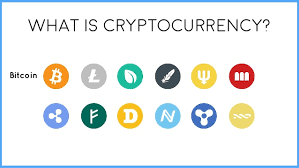Gold and Silver vs Bitcoin and Litecoin

A lot of financial experts tend to think of Bitcoin and Litecoin
as the digital counterparts of gold and silver. All four assets have seen significant value changes over the past few years. One thing that stands out right now is how Bitcoin is worth more than 1 Oz of gold, and Litecoin is worth more than 1 Oz of silver. Perhaps there is some truth to this comparison after all.
Gold and Silver
It is evident these two precious metals have always had a bit of an interesting relationship. Silver has always been considered to be the “little brother” of gold, which also explains why it has a much lower value. However, silver is still a precious metal, and only second in most people’s minds to gold. From a collector’s and an investor’s point of view, diversifying precious metal holdings into both gold and silver has been a popular decision over the past few years. The value of silver has gone through some interesting highs and lows over the past few years as well. Right now, one Oz of silver is valued at US$16.59, whereas it hit over US$40 in late 2011.
One of the downsides of precious metals is how they seem to only gain value during times of financial distress. The same can be said about gold, as it is a somewhat volatile asset these days. Right now, one Oz of gold is worth US$1,237.92, compared to over US$1,700 at the end of 2011. Despite these declines, both gold and silver are still popular assets, even though they may not necessarily generate a lot of profit.
Bitcoin and Litecoin
Although comparing gold and silver to Bitcoin and Litecoin is the same as comparing sea shells to diamonds, there are some interesting correlations. Litecoin is the “little brother” to Bitcoin and is highly regarded among cryptocurrency enthusiasts. In this regard, the value of Litecoin often represents a fraction of Bitcoin’s, similar to how gold and silver relate to one another.
Looking at the current prices, it is not hard to see why this comparison still holds up. Bitcoin is valued at US$1,550 right now, whereas Litecoin has surpassed the US$20 mark at the time of writing. In this regard, both popular cryptocurrencies have successfully surpassed the value of gold and silver when measuring both in ounces. An interesting development, that much is evident. In the end, comparing Bitcoin and Litecoin to gold and silver is somewhat understandable, albeit it is not the best metric by any means. It is true Bitcoin is still the “king of crypto” whereas Litecoin is its loyal right-hand man. However, they are not the only contenders right now, Comparisons like these only carry so much weight, yet it provides an interesting way to look at popular cryptocurrencies.
Chuck Reynolds
Contributor
Alan Zibluk – Markethive Founding Member





 Introduced in 2008 as the technology underpinning Bitcoin, a digital currency that is created and held electronically without any central authority, blockchain is a secure digital ledger for any kind of data. It simplifies record keeping and reduces transaction costs.Its range of applications in commerce, finance and potentially politics continues to widen, and that has triggered a debate around how to regulate the tool.
Introduced in 2008 as the technology underpinning Bitcoin, a digital currency that is created and held electronically without any central authority, blockchain is a secure digital ledger for any kind of data. It simplifies record keeping and reduces transaction costs.Its range of applications in commerce, finance and potentially politics continues to widen, and that has triggered a debate around how to regulate the tool.





